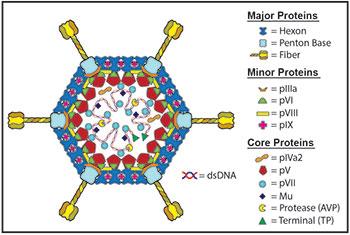Implants and Medical Devices for Long-acting Drug Delivery
Patient adherence to drug therapies remains a major obstacle to realizing the full therapeutic benefit of drug treatments in the real world. Depending on the polymers used to modulate drug release, implants can be categorized as biodegradable or removable implants.
Implants may be designed as a matrix composed of drug and polymer, wherein the release behavior is driven by a pore network created by the distribution of drug in the polymer. In such a system, the drug release rate is strongly dependent on drug loading, degradation rate of polymeric matrix, and the implant geometry. Alternatively, implants can be designed as reservoir systems, wherein a core of drug and polymer is surrounded by a rate-controlling polymer membrane. Since the drug release kinetics from reservoir implants are limited by diffusion through the rate-controlling membrane, they are capable of decoupling the treatment duration of a single implant from its release rate.
My lab is investigating the correlation between process, composition and quality attributes of the following types of implants.
- Thermoplastic poly(urethane) and ethylene vinyl-acetate based biodurable implants prepared using melt extrusion process
- Poly(lactide-co-glycolide) based biodegradable implants prepared using melt extrusion process
Continuous Granulation to Improve Powder Properties
There is increasing interest in the pharmaceutical industry to implement continuous manufacturing processes for pharmaceutical manufacturing. Continuous manufacturing offers several advantages such as flexible operation, lower operational cost, and improved product quality. Continuous manufacturing also enables the processing of pharmaceutical formulation at “extreme conditions” (i.e. higher temperature and higher pressure) that are not feasible in the conventional batch processes.
Roller compaction (RC) has been implemented in continuous manufacturing to improve the flow properties of blends for most of tablet manufacturing. However, twin-screw based melt granulation (TSMG) and wet granulation (TSWG) are expected, in many ways, to be a better alternative to RC because of the unique mechanisms for granule formation during twin-screw granulation, and the modular design of twin-screw extruders. Thus, one goal of this project is to assess the advantages and limitations of the continuous TSMG and TSWG processes in comparison to RC, which is the leading continuous tablet manufacturing process.
Our research efforts are concentrated on:
- Developing a mechanistic understanding of the thermal and mechanical stresses imposed on formulation during TSMG and TSWG.
- Developing formulation and processing strategies to enable TSMG and TSWG, including thermal binder selection and thermal stress reduction.
- Investigating the effect of the formulation composition and processing parameters on the critical quality attributes of granules and final tablets prepared with TSMG and TSWG.
- Simulating and modeling of TSMG and TSWG processes.
Formulation and Processing Strategies for Bioavailability Enhancement
Especially drugs for virology and oncology treatment, about 70% of drug candidates in the development pipeline face the challenges of the solubility-limited absorption. The number is expected to rise even further. Formulation scientists are increasingly relying on solubilization technologies, including amorphous drug substance, nanocrystals, lipids, and amorphous solid dispersions (ADS), to achieve enhanced and more consistent bioavailability of these drugs.
Amorphous solid dispersions (ASDs) are polymeric matrices containing molecularly dispersed drugs. ASD technology is becoming the preferred drug delivery methodology to enhance the bioavailability of drugs with solubility-limited absorption. Improved bioavailability is attributed to the high transient solubility of the amorphous drug in the gastrointestinal tract as the result of the formation of amorphous nanoparticles in situ. Despite all of the success, more research on ASD technology is needed. The effect of formulation composition and manufacturing process on the performance of ASDs needs to be understood better, and novel analytical methods need to be developed to assess in vivo performance of ASDs. Without this knowledge, the formulation composition and manufacturing process could not be rationally designed, the quality of products cannot be ensured, and patients’ health and safety are ultimately at risk.
My group’s research interest in ASDs includes:
- Studying molecular-level drug-excipient and excipient-excipient interactions, and to investigate the impact of these interactions on the properties of ASDs.
- Developing advanced analytical methods to characterize behaviors of ASDs in solution state.
- Understanding the effect of manufacturing processes on the physical stability in solid-state, and supersaturation/speciation in solution-state.
Visit Dr. Zhang's faculty profile page to learn more.


